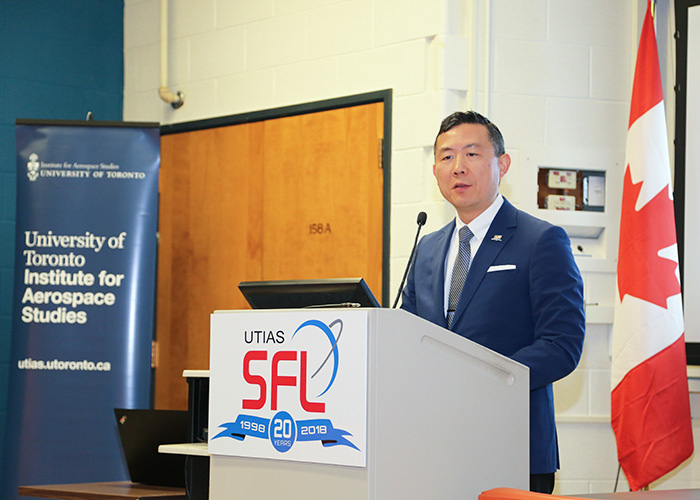
Researchers from the University of Toronto Institute for Aerospace Studies (UTIAS) Space Flight Laboratory (SFL) will develop three microsatellites to demonstrate new approaches to support next-generation situational awareness in Canada’s North.
The project, named Gray Jay Pathfinder, was announced today at UTIAS by Members of Parliament Michael Levitt, MP for York Centre, and Ali Ehassi, MP for Willowdale. Partners include SFL, directed by Professor Robert Zee (UTIAS), the Department of National Defence / Canadian Armed Forces, A.U.G. Signals Ltd. and Space Strategies Consulting Ltd.
“Increased trade and activity in the Arctic will create greater demand for the specialized services of the Canadian armed forces, including search and rescue, emergency response and environmental monitoring,” said Levitt. “Today’s contract will stimulate Canadian industry and academia in key technology areas. We are proud and excited to invest in this promising research.”
Zee is the director of the Space Flight Laboratory (SFL) at UTIAS. He and his research team are receiving $15 million in funding for the project, and will be drawing on more than 20 years of successful microsatellite development for customers and end-users around the world. Among their 21 operational satellites are CanX-4/CanX-5, which in 2014 demonstrated formation flying with sub-metre relative position control.

“The Gray Jay Pathfinder project represents a significant opportunity for us to leverage our past successes and use our leading-edge technologies to support the needs of Canadian defence in the 21st century,” said Zee. “It will open the door to greater opportunities to serve Canadian interests as well as enhance global competitiveness and foster new international collaboration while providing elite training opportunities for graduate students.”
SFL will take the lead on designing the satellites, while the industry partners will be developing the algorithms required to process the signals obtained and conducting a needs/utility assessment analysis of the approach to far-north surveillance.
Gray Jay Pathfinder falls within the larger the All Domain Situational Awareness Science and Technology (ADSA S&T) Program launched by the federal government in 2015. It supports the development of innovative solutions for enhanced domain awareness of air, maritime surface and sub-surface approaches to Canada, in particular those in the Arctic.




